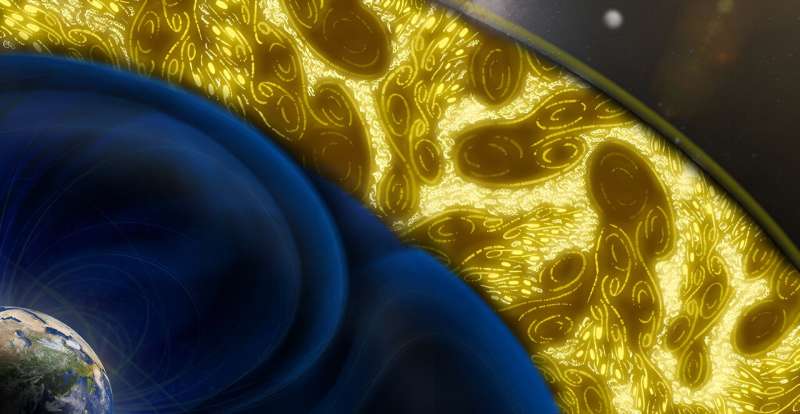This article has been reviewed according to Science X's editorial process and policies. Editors have highlighted the following attributes while ensuring the content's credibility:
fact-checked
peer-reviewed publication
trusted source
proofread
Astrophysicists work toward unification of turbulence framework—weak-to-strong transition discovered in turbulence

Turbulence is ubiquitous in nature. It exists everywhere, from our daily lives to the distant universe, while being labeled as "the last great unsolved problem of classical physics" by Richard Feynman. Prof. Dr. Huirong Yan and her group from the Institute of Physics and Astronomy at the University of Potsdam and DESY have now discovered a long-predicted phenomenon: the weak-to-strong transition in small amplitude space plasma turbulence.
The discovery was made by analyzing data from ESA's Cluster mission—a constellation of four spacecraft flying in formation around Earth and investigating how the sun and the Earth interact. The research is published in the journal Nature Astronomy.
The weak-to-strong transition in Alfvénic turbulence is the most critical, yet observationally unconfirmed, prediction of magnetohydrodynamic (MHD) turbulence theory in the last three decades. It is exceptionally difficult because the three-dimensional sampling of turbulence fluctuations was not available yet. Therefore, the research team developed new multi-spacecraft analysis methods to obtain three-dimensional information on velocity and magnetic field fluctuations, allowing direct comparisons between observations and theory.
"The observational confirmation of the weak-to-strong transition solves the last puzzle in MHD turbulence theory: It proves that the turbulence self-organizes from linear 2D wave-like fluctuations to strong 3D turbulence during the energy cascade (i.e., energy transfer across scales) with increasing nonlinearity, regardless of the initial level of disturbances, highlighting the universality of strong MHD turbulence," says Huirong Yan, professor for plasma astrophysics at the University of Potsdam and leading scientist at DESY.
As a result, those findings substantially deepen our knowledge of ubiquitous turbulence, and their implications extend beyond the study of turbulence itself to particle transport and acceleration, magnetic reconnection, star formation, and all other relevant physical processes from our Earth to the remote universe.
More information: Siqi Zhao et al, Identification of the weak-to-strong transition in Alfvénic turbulence from space plasma, Nature Astronomy (2024). DOI: 10.1038/s41550-024-02249-0
Journal information: Nature Astronomy
Provided by University of Potsdam




















